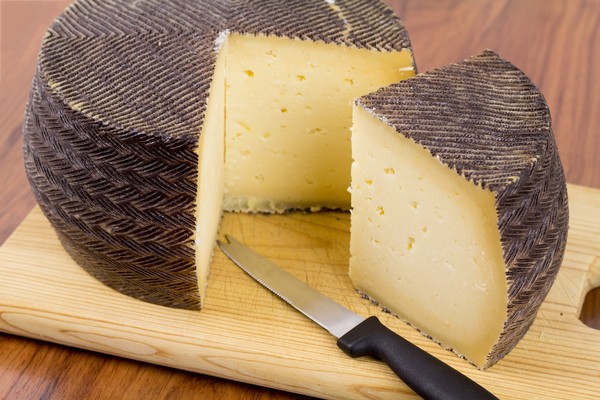Manchego Cheese

Manchego cheese has historically been crafted using milk sourced from sheep that graze on the elevated central Plateau of Spain. This hard cheese boasts a silky texture, a buttery mouthfeel, and a flavorful profile that lingers long after consumption, making it a popular choice for many cheese lovers.
Marthinus StrydomThe Story
Manchego cheese has a rich history dating back thousands of years. Its origin can be traced back to the La Mancha region of Spain, where sheep farming and cheese production were deeply intertwined with the local culture and economy. Manchego was traditionally made by shepherds who roamed the central Plateau of Spain with their flocks of sheep, using milk from their own animals to craft the cheese. Over time, this cheese became a staple food in the region and gained popularity throughout Spain and beyond. In 1984, the Manchego cheese received the designation of Protected Designation of Origin (PDO) from the European Union, which recognized its unique characteristics and the traditional methods used to make it. Today, Manchego cheese remains a beloved food in Spain and is enjoyed by people around the world.
More about Spain
Spain, a country on Europe’s Iberian Peninsula, includes 17 autonomous regions with diverse geography and cultures. Capital city Madrid is home to the Royal Palace and Prado museum, housing works by European masters. Segovia has a medieval castle (the Alcázar) and an intact Roman aqueduct. Catalonia’s capital, Barcelona, is defined by Antoni Gaudí’s whimsical modernist landmarks like the Sagrada Família church.

Subscripe to my Facebook page.
Subscripe to my Youtube channel.
© All recipes are copyright protected by TheCultureCook.com unless the recipe was adapated from another source. All recipes are uniquely crafted and adapted by TheCultureCook.com. Copyright of some or all of the text reside with the original author.
Ingredients
Method
- Heat the milk: Begin by heating the milk to 22.2°C in a large pot. This can be done on a stovetop or with a specialized cheese-making pot. Heating the milk will help to activate the starter culture and set the stage for curd formation.
- Add the culture: Sprinkle the starter culture onto the surface of the milk and let it sit for 2 minutes to rehydrate. This culture contains bacteria that will ferment the lactose in the milk and produce lactic acid, which will help to create the characteristic flavor and texture of the cheese.
- Stir the milk: Use a sterilized spoon or whisk to gently stir the milk and distribute the starter culture throughout while maintaining the temperature at 22.2°C.
- If you are using pasteurised milk, then you need to add Calcium Chloride. Add the Calcium Chloride and stir.
- Heat the milk further: Raise the temperature of the milk to 30°C while stirring gently. This will help to initiate the rennet coagulation process.
- Add rennet: Once the milk reaches 30°C, add the rennet and stir gently for about 1 minute. The rennet will help to coagulate the milk and form a solid curd.
- Rest and cut the curds: Let the milk sit undisturbed for about 30-45 minutes until a firm curd has formed. Then, use a sterilized knife to cut the curd into small pieces.
- Heal the curds: Let the curd rest for about 10-15 minutes to allow the cut surfaces to heal.
- Stir the curds: Stir the curds gently for about 5 minutes to reduce their size and promote further whey release.
- Cook the curds for 50 minutes: Raise the temperature of the milk to 39°C while stirring gently. This will help to expel more whey and firm up the curds.
- Settle the whey: Turn off the heat and let the curds settle in the whey for about 5 minutes.
- Remove the whey: Use a sterilized spoon or ladle to remove the top layer of whey from the pot.
- Press the curds: Transfer the curds to a cheese press lined with cheesecloth. Press the curds under whey for 15 minutes to remove any remaining whey and shape the cheese.
- Press with 7kg for 15 minutes
- Turn and redress the cheese and press with 7kg for 15 minutes.
- Turn and redress the cheese and press with 7kg for 15 minutes.
- Turn and redress the cheese and press with 14kg for 6 hours.
- Remove from the press, weigh the cheese and place in a saturated brine solution. Use The Culture Cook brine calculator to determine how long you need to brine the cheese.
- Air dry the cheese for a few days until it’s dry to the touch.
- Gently rub olive oil on the cheese.
- Age in your curing chamber or cheese cave for a minimum of 6 months. Preferably age the cheese for 1 year. Every few weeks brush off the mold and once every 3 months give it a gentle olive oil rub.
